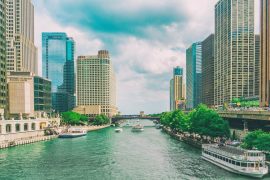Water is a necessity in our daily lives. We need to drink water, cook with water, and more activities in it. We are constantly reminded of the importance of drinking enough water to stay healthy and hydrated. Since the water crisis in Flint, Michigan, came into national focus in 2015, the quality of our water has been a frequent topic in the news.
Although the majority of affected areas are low-income and rural, unsafe and poor-quality water can be found throughout the United States. If you want to know if you live in a state with good or bad water, we have compiled lists of the best and worst public tap water in the United States. Do not worry if your state is included in this list; we have a number of filtering methods to clean your tap water.
Regulations for Clean and Safe Water
After the passage of the Clean Water Act in 1972 and the Safe Drinking Water Act in 1974, Americans believed that their public water systems would provide clean water. While these laws have helped set standards that ensure access to safe drinking water, recent headlines have shown that this is not always the case.
Despite the fact that life-threatening diseases such as cholera and typhoid have been nearly eradicated thanks to the introduction of water sanitation, there are still concerns about the safety of public water. Even though regulations are in place to ensure that Americans have safe drinking water, many public water systems continue to have problems with contaminants like lead, pesticides, and bacteria.
The Safe Drinking Water Act is concerned with setting standards for evaluating the quality of drinking water. The Act authorises the Environmental Protection Agency (EPA) to establish a set of minimum water quality standards and requires all public water suppliers to meet them. The Environmental Protection Agency (EPA) gives state governments permission to implement water safety regulations. The law also requires the EPA to set minimum requirements for states to maintain their underground drinking water supplies.
Top-Rated Water Utilities
Des Moines, Iowa
The city had the second lowest bacteria levels in drinking water and was in the top 15 for lead, turbidity and haloacetic acid levels.
Austin, Texas
It was among the top ten metropolitan statistical areas for lead, turbidity, and haloacetic acid.
Sioux Falls, South Dakota
The lowest turbidity and haloacetic acid levels were in the top ten.
Miami, Florida
For low bacteria, lead, turbidity, and haloacetic acid levels, it was in the top 25.
Birmingham, Alabama
For low bacteria and lead levels, it ranked in the top ten. Levels for turbidity and haloacetic acid were more evenly distributed across the cities on the list.
Boise City, Idaho
Although it ranked in the top five for lead levels, it had higher levels for haloacetic acid, bacteria, and turbidity.
Las Vegas, Nevada
Although it had one of the lowest turbidity scores on the list, its haloacetic acid score was higher than average.
Tampa, Florida
The city ranked in the top 15 cities for haloacetic acid and lead concentration and had bacteria levels well above the average for cities on the list.
Pittsburgh, Pennsylvania
Bacteria levels were low but lead and haloacetic acid levels were in the middle of the cities on the list.
Tulsa, Oklahoma
Although bacteria and lead levels were low, the city had significantly higher levels of haloacetic acid than the other cities on the list.
Learn More About the Quality of Your Local Water
If you get your water from a public source, you’ll get an annual report called a Consumer Confidence Report (CCR) from the Water Company. The report contains information about the quality of your local drinking water. It also includes information about the source of the water and the levels of contaminants detected in the water.
A CCR is not available to everyone. They are usually sent to the person who is responsible for paying your water bill. This means that if you live in an apartment, condo, or rental property, you probably will not receive a CCR every year. In those cases, you may receive such a report from your landlord, property management company, or homeowners’ association. Local CCR reports that the water utility publishes online may also be available to you.
CCRs are not issued to people who get their water from private sources such as groundwater wells. Since the EPA does not regulate private wells, no testing is required for a CCR. The owner of the well is responsible for testing and maintaining water quality. If your water comes from a private well, you can quickly and easily determine the safety of your water with a well water test kit from TestAssured.
How to Get Clean Water if You Live in the Bad Water Area
No need to pack your bags if you live in one of the states on the “worst tap water in the United States” list. While there are other options than drinking tap water, a water filtration system is highly recommended. If you think bottled water is a good alternative to dirty tap water, read our Bottled Water vs Filtered Water article for a list of cons that argue against the wasteful and expensive product. By filtering your tap water at home, you can protect your long-term health by removing harmful contaminants. If you are interested in filtering your water at home but do not know where to start, we recommend consulting your local municipality’s water quality report. Using this article as a guide, you can easily understand your city’s water report. Once you know what contaminants are present in your drinking water, you can use our guide to better choose a water filter. A whole house water filter would be necessary if you want to filter your water from every tap in your house. If you only care about the water you drink, under-sink filters are an easy and convenient way to ensure your water is clean and healthy.
